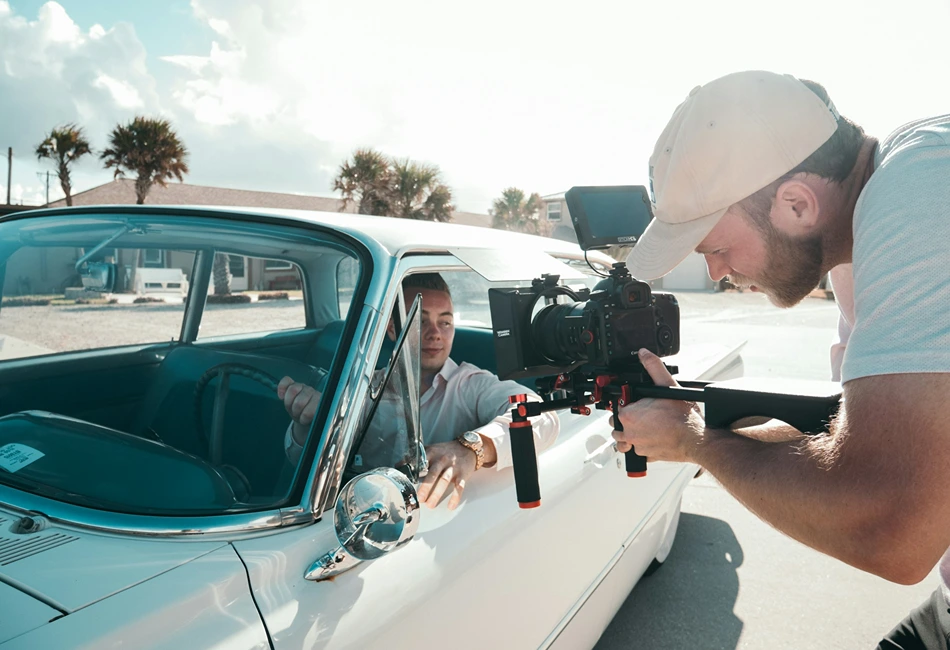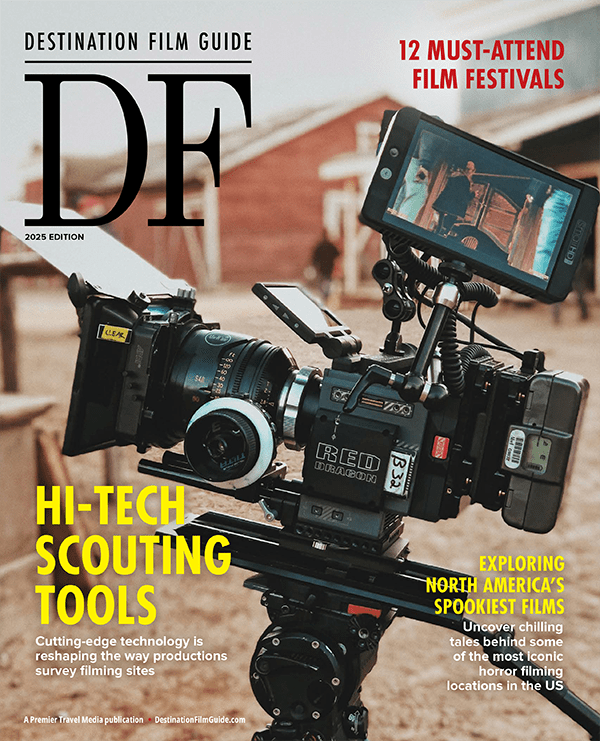Discover how film crews overcome challenges to bring historical filming locations to life in contemporary settings
By Sheila Zapata
Stepping back in time is a magical experience, and period pieces are the best way to experience that magic. Whether you think of the cobblestone streets in 18th-century Paris or a Wild West town in America, these films transport us back to the past with the best kind of authenticity. But behind the scenes, there’s so much cinematic creativity that goes into transforming modern locations into historical settings. Period productions affect audiences with their stories and the little details that bring everything together. Here, we examine how productions facilitate this.
The ultimate resource for filmmakers is here! Download Destination Film Guide for free to explore stunning locations, production incentives, and expert planning tips.
Authenticity vs. Imagination: Recreating History in Film
A difficult decision for filmmakers when creating period pieces on location is choosing between real historical sites and building complete fictional sets. Some approaches offer tremendous advantages in terms of authenticity, budget and storytelling. Shooting on actual historical locations can give films a sense of realism and a challenging environment to copy. Buildings that have naturally worn down over time, reflecting the essence of nature, can enhance the visual appeal of a story and its credibility. It’s also cost-effective as there is little to no need for set construction.
In contrast, setting up in a studio is somewhat safer. There are instances when filming on location can be expensive, depending on factors such as travel, accommodations, location fees, and the cost of additional crew members. There’s also the possibility of unpredictability when it comes to weather conditions, noise and situations that disturb scheduling. Using a studio offers control over the environment for creating high-quality scenes, providing crew members with opportunities to explore various set construction techniques. It eliminates travel expenses and the need to obtain permits to film at specific locations. Despite the advantages, studios face the challenge of curbing creativity due to limited space and the need for artificial lighting, which can compromise visual authenticity.
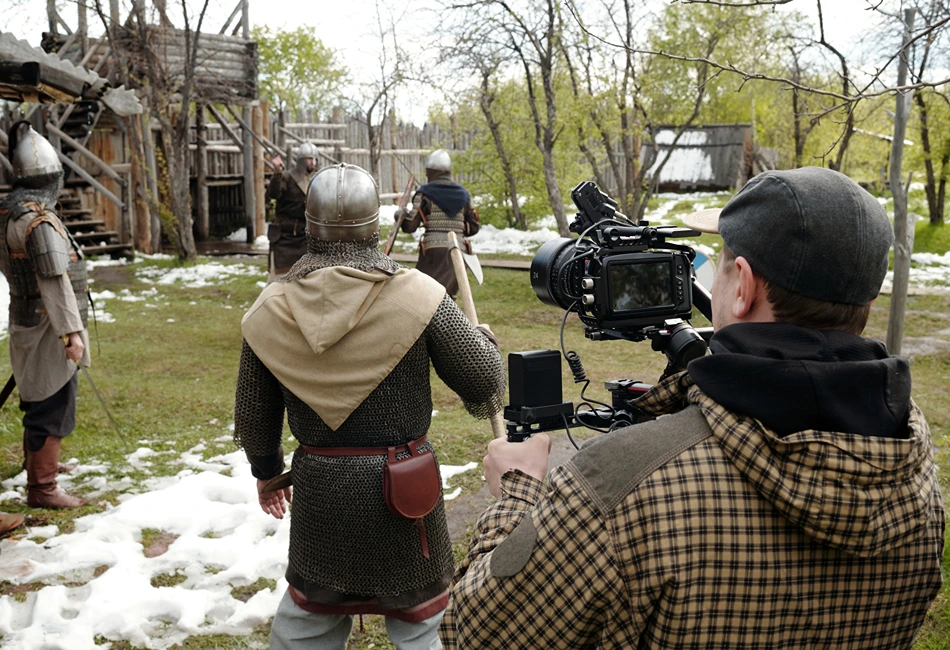
Film crew shooting a historical reenactment scene in a natural medieval setting. Photo credit Freepik
Challenges of Recreating the Past
For audiences, it wouldn’t cross their minds how difficult it would be to recreate sets that don’t include location scouting for period films. However, there are things to consider for filmmakers who require historical filming locations, whether replicated or authentic.
Physical Transformations
Filmmakers need to consider concealing modern features to maintain authenticity when making physical transformations in real historical locations. The little details are what make certain things special; items such as street signs, security cameras and specific roads need to be addressed to maintain the authenticity of the period piece.
While the surface and texture aspects of films are crucial, crew members often face restrictions when it comes to artificially aging walls, floors, or furniture. However, as much as creativity is celebrated in films, it’s essential to always respect the integrity of the location. Some places, such as battlefields or religious sites, require cultural sensitivity and general respect. If outside items are brought for certain scenes, they should be removed without leaving any trace of their presence. This respect for the location’s integrity ensures the preservation of its cultural and historical significance.
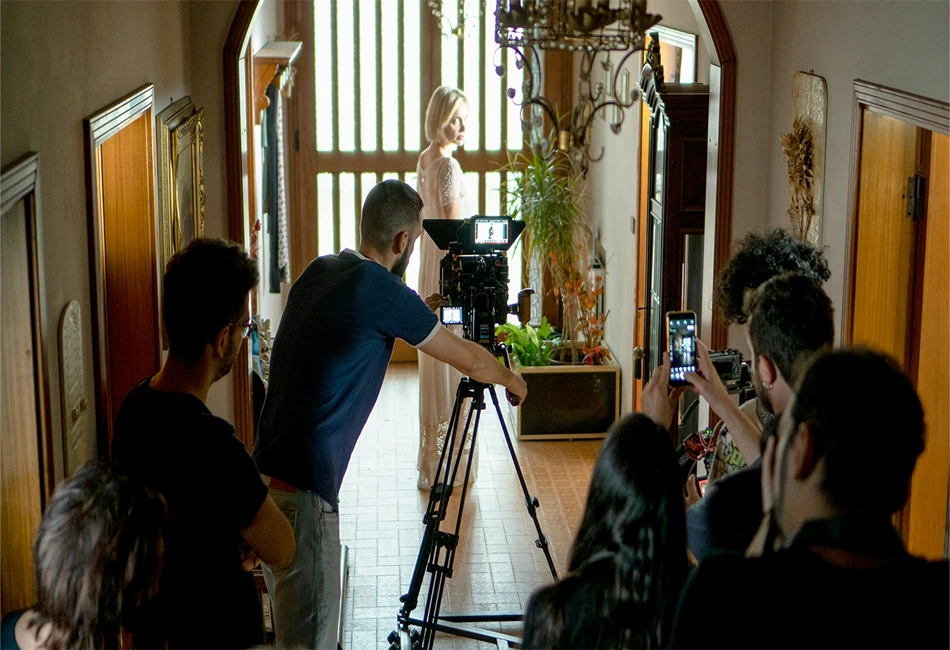
Shooting a historical scene in an old home. Photo credit Riccardo Sanmartini via Unsplash
Legal & Logistical Hurdles
From a legal standpoint, the primary concerns are permits and licensing requirements, liability and insurance. Obtaining licenses for films is a complex and time-consuming process, with varying requirements depending on the country and city. Producers must also provide proof of insurance to cover potential damage to fragile artifacts or buildings. Studios are required to take full responsibility for financial issues that may arise. A forgetful restriction that comes to mind is prohibiting certain scenes from being filmed in specific locations. These include, but are not limited to, violence, nudity/sex, or politically and religiously offensive content.
From a logistical perspective, film crews must navigate limitations such as filming time restrictions on historical sites and the lack of modern resources. Being on historical sites means there aren’t modern buildings for electricity, heating, air conditioning, and bathrooms. Crew members must work closely with directors, conservation staff, tourism management teams, and security personnel to ensure their actions are approved before filming, with safety being the top priority. This emphasis on safety ensures the well-being of the crew and the preservation of the site.
Cost & Budget Constraints
With all the expenses that come into making films, choosing to use historical locations adds to the list. If you want to use a famous or highly protected site or need an area close to the public, you may incur high expenses. Several factors, including the duration of filming, the number of people on the set during recording, and the potential for stunts or action scenes, are crucial to consider. Some fees will be charged to film crews if damages are found on site or if they need restoration and cleanup crews.
Modifications play a significant role in these films, as they help maintain the authenticity of the period. Examples of this are covering modern structures, such as eclectic wires and signs, historical props replacing modern items and adding set pieces that won’t disturb the rest of the environment. In the film industry, time equals money, and delays pose a significant challenge. Other contenders include weather delays when recording at outdoor sites and the time it takes to set up and take down sets.
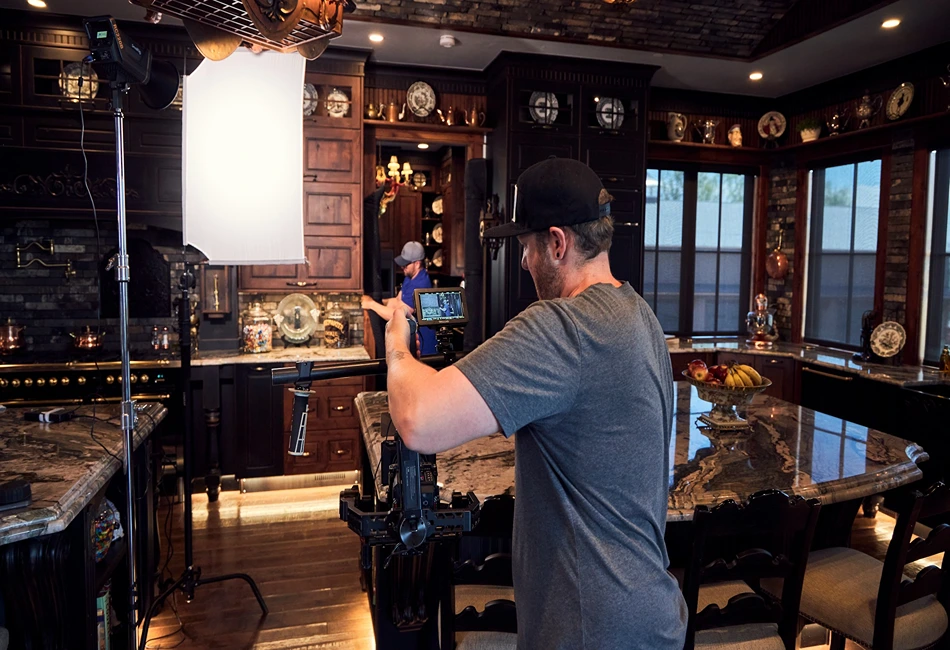
Filming period pieces on location. Photo credit David Glessner Photographer-Director via Unsplash
Budgeting for Film Productions
To ensure accuracy in your filming journey, here are a few tips for budgeting your next big hit. Without a budget for your film, there is no film. Statistics show that a shocking 71% of film projects exceed their original budget by an average of 31%. It’s the main reason why projects are delayed, limit creativity and shut down; you should be creating a financial framework that protects your vision while keeping costs in check.
Start writing down your budget plan to keep essential details easily accessible. These should include anticipated expenses, pre- and post-production costs, cast and crew salaries, rentals, and location fees. With that, you should track all payments as they are incurred. Tools to help with this would be Xero or QuickBooks Online for accounting, and spreadsheets such as Smartsheet, to provide the best organization for your film.
Examples in Film & TV
From imaginary worlds from long ago to period pieces based on epic world wars, these popular productions are prime examples of utilizing the natural environment.
- The Lord of the Rings: Breathtaking landscapes of New Zealand served as the backdrop for Middle-earth, which created a sense of awe throughout the movie.
- The Grand Budapest Hotel: The almost magical architecture of the hotel contributed to the film’s unique visuals.
- Moonlight: The vibrant beaches of Miami captured the film’s essence, which reflected well with the characters’ storylines.
- Downton Abbey: The Highclere Castle estate serves as the emotional and narrative center of the story, which indulges in the drama of the narrative and the emotions of the characters.
- Peaky Blinders: Post-World War I Birmingham provides a backdrop that encapsulates the era’s social, economic and political climates of this story. It allows the film to explore complex themes and provides the characters with room to develop.
Is Filming Period Pieces on Location Possible?
Using a real historical location for your film is a significant investment. It provides movies and television productions with a realistic essence and doesn’t require constructing sets, unlike studios. It also evokes a nostalgic feeling with recognizable icons from generations past. There are still challenges to consider, such as potential damage, stringent laws and regulations to follow, and the cost of location fees for older sites. However, these are not deal breakers.
To choose a suitable location, consider both the visual aspects and the storyline of your script. Utilize modern technology at your disposal to find the best layouts and mapping purposes. Advice for current or future filmmakers is to outline your budget for both short-term and long-term filming purposes to ensure a streamlined process.
With these tools and other free resources from Destination Film Guide, filming period pieces on location isn’t just possible; it provides an authentic layer for your production that cannot be replicated, even in today’s technology-driven world.
Stay in the know about top filming destinations! Subscribe to the Destination Film Guide newsletter and get expert insights, location highlights, and industry news straight to your inbox for free.

